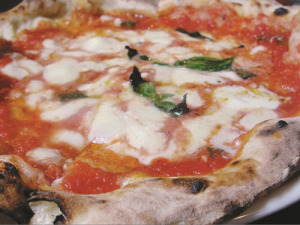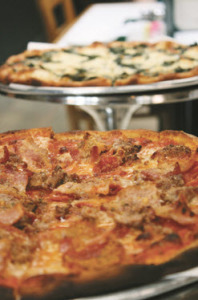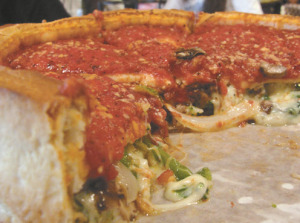The following interview with Liz Barrett, author of Pizza, A Slice of American History is revealing and timely. She explains how she was able to research her book and how she was able to find some of the incredible information contained in her new treatise on pizza. Liz also shares some great advice for anyone who wants to write their own book. Thanks, Liz for taking the time to speak with me.
How did you start researching the book?
Even though I’ve been writing about the pizza industry for seven years with PMQ Pizza Magazine, I was surprised at how much research went into writing Pizza: A Slice of American History. With PMQ, I mostly write about what’s happening now, along with some predictions for the future; for this book, it’s all about pizza’s history here in America, so I turned to all of my favorite pizza books, called up some pizza folks I know, and started scouring the Net for pizza information to help fill in blanks.
What was the reason you wanted to write the book?
I wanted to bring something different to the pizza book offerings that are currently available. My publisher and I had a long discussion before I started about the various topics I could discuss in the book that would make the book more unique. Because I came at it from the standpoint of a seasoned pizza journalist, I’m able to share lots of fun nuggets of information that readers can’t necessarily find in other books. I break down the history of each of the major pizza styles and then include a variety of additional snippets of information all throughout the book, like where to find the slices outside of the normal zone, how to make them at home, pizza trivia, and more.
What were a couple of the out of this world pizzas that you sampled?
I didn’t necessarily sample pizzas for the book. I’ve been “sampling” hundreds of pizzas since 2007, both for PMQ and for my own personal enjoyment.
Do you make your own pizza?
Every once in a while my husband and I will make pizza, and it’s good, but it’s not something we do on a regular basis. I really prefer to support the pizza makers and enjoy the pizzeria experience.
Any pizza tips for the home pizza maker?
Page 49 of the book has a whole list of tips for the home pizza maker. My favorite is: If you’re using a pizza stone to cook your pizza, put the stone in the oven during the pre-heat phase; when you put your pizza on the hot stone, it will mimic a deck oven.
What was the most fun you had researching the book?
When it comes to research, I’m kind of a nerd. I actually had the most fun with the research itself—looking back through old records to find when an ingredient was mentioned, and checking patent dates to see when certain ovens were invented, etc. When I’m on a hot lead, I’ll stay up until 3 a.m. trying to find the answer.
How did you choose the mini interviews that were included in the book?
The people I chose to interview are just a few of the people I’ve respected over the years for being innovative, entrepreneurial, industrious, or just being a great example of the term “pizza lover”. There’s never room for everyone you want to include, but I wanted to give readers a taste of some of the people that help to make the industry what it is today.
What was the big takeaway from writing your book? Did you come to any conclusions?
That’s a great question. I think what stood out to me the most was that the same ingredients and equipment that were being used decades ago in some of these regions are still being used today. Pizza makers are very dedicated to their craft and honoring its traditions. The same ovens are being used in New Haven, Connecticut; the same square steel pans are being used in Detroit; and the same Provel cheese is topping pizzas in St. Louis. With pizza, you don’t have to be overtly innovative to please people. Give them what they remember, what gives them that warm, fuzzy, comfortable feeling inside, and they’ll love you forever.
What advice would you give to someone who wanted to write a book like yours?
Clear your schedule. If you can write, you can write a book. But, you need to have the time for the research, phone calls, follow-ups, late nights, re-writes, deadlines, etc. I put all of my freelance writing on hold when I wrote this book because I knew there was no way I could do both at the same time. You have to focus on the book until it’s done, or you will never meet your deadline on time.
What’s next? Do you have any other books planned?
I recently spoke with someone who wanted to co-author a book with me in the business/marketing field, since I cover that topic a lot for PMQ and my blog, The Pizza Insider. For now, though, I’m focusing my efforts on getting the word out about Pizza, A Slice of American History and making sure that it ends up on the coffee table of every house and the counter of every pizzeria!
Order, your own copy right here: Pizza, A Slice of American History.




